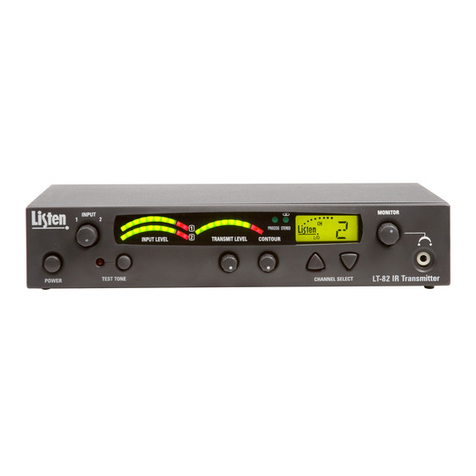Listen LT-700 User manual
Other Listen Transmitter manuals

Listen
Listen LA-326 User manual
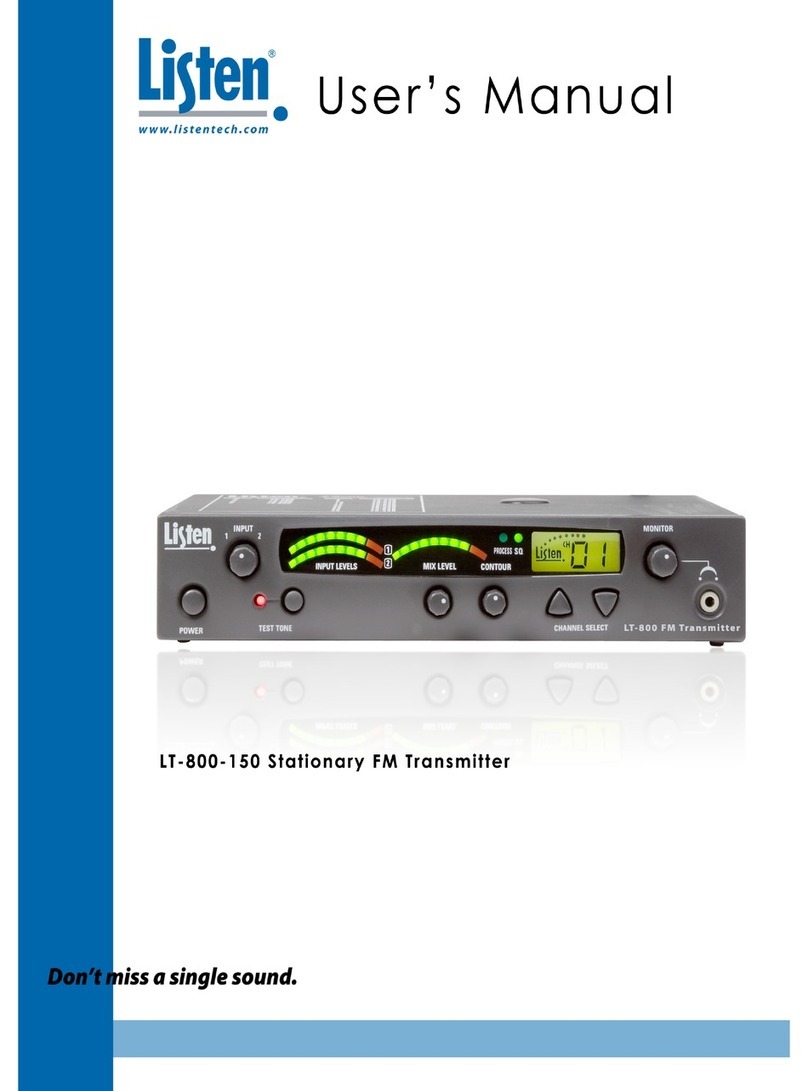
Listen
Listen LT-800-150 User manual

Listen
Listen LP-3CV-072 User manual
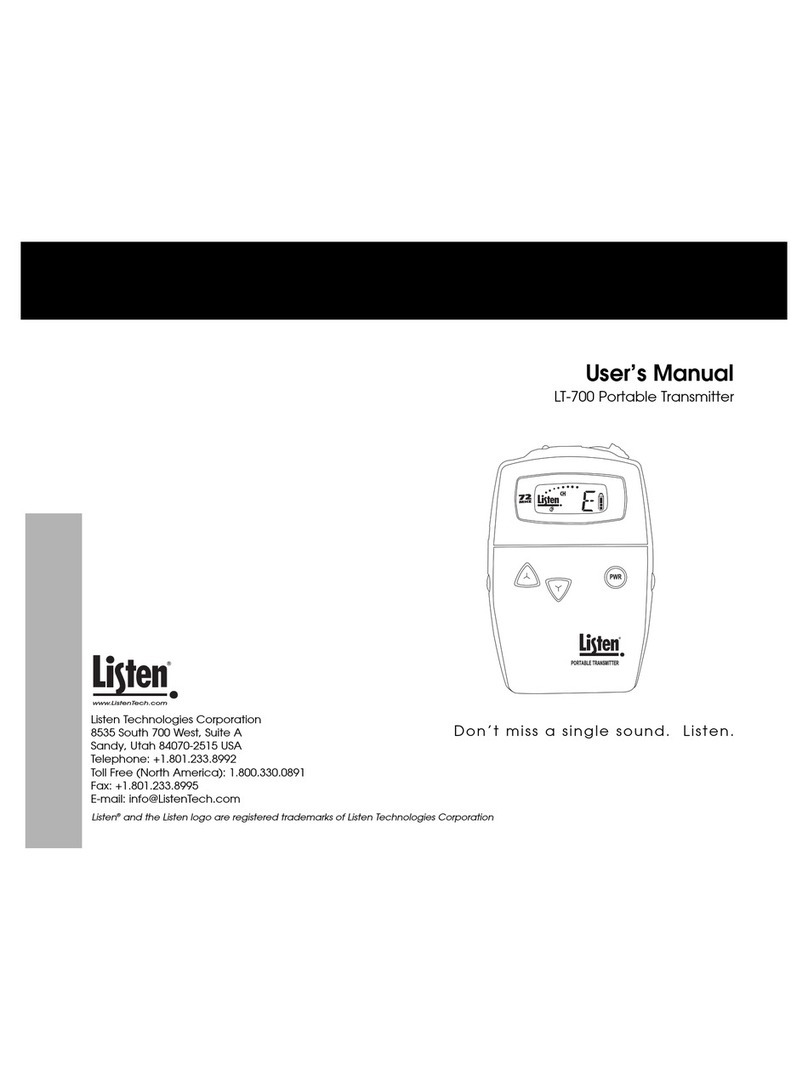
Listen
Listen LT-700 User manual

Listen
Listen LT-82 User manual

Listen
Listen LT-700-072 User manual
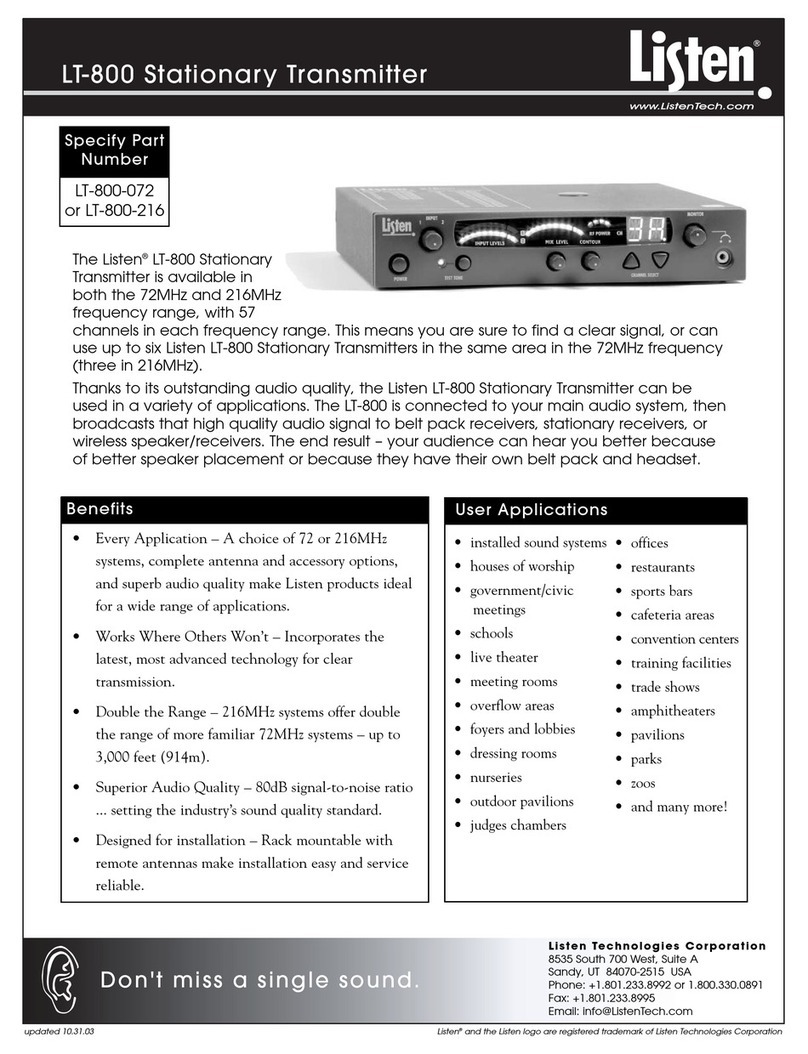
Listen
Listen lt-800 User manual

Listen
Listen LT-700 User manual
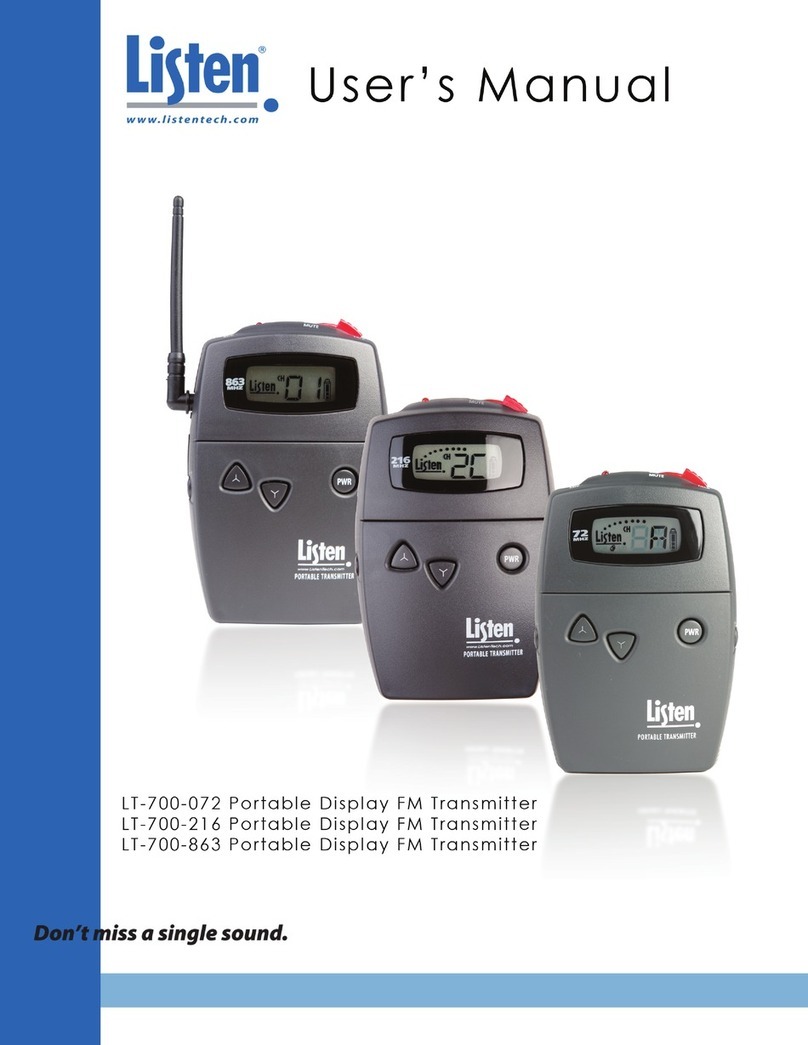
Listen
Listen LT-700-072 User manual
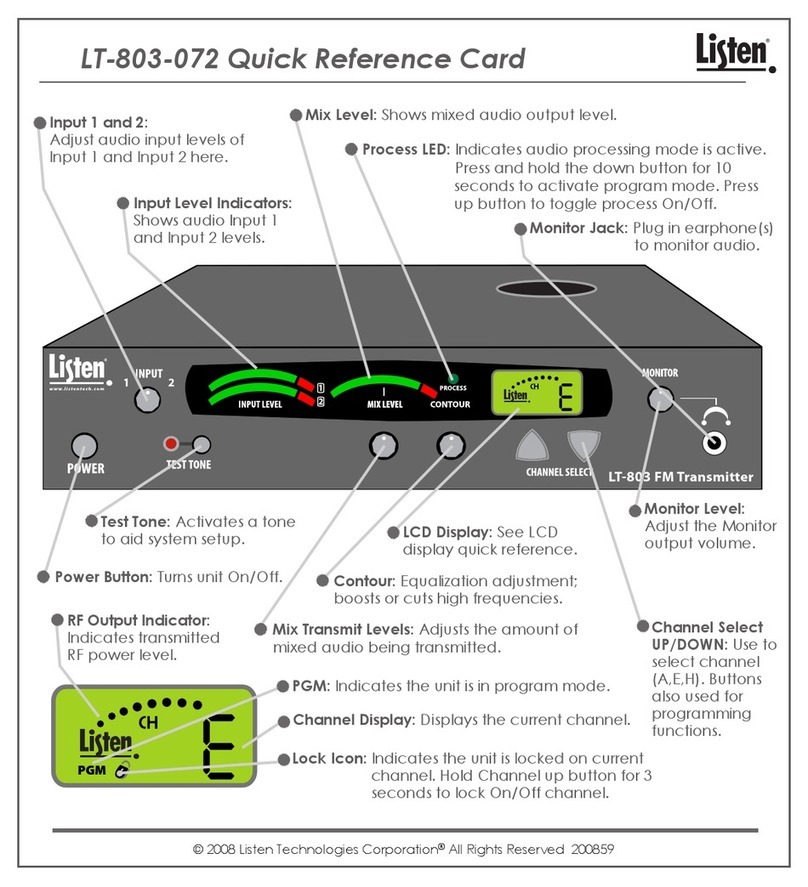
Listen
Listen LT-803 Reference guide
Popular Transmitter manuals by other brands

Geo
Geo Web Pack quick start guide

Inovonics
Inovonics EchoStream EN1210W installation instructions

IKONNIK
IKONNIK KA-6 quick start guide

Rohde & Schwarz
Rohde & Schwarz SR8000 Series System manual

Audio Technica
Audio Technica UniPak ATW-T93 Installation and operation

NIVELCO
NIVELCO EasyTREK SCA-300 Series Programming manual



